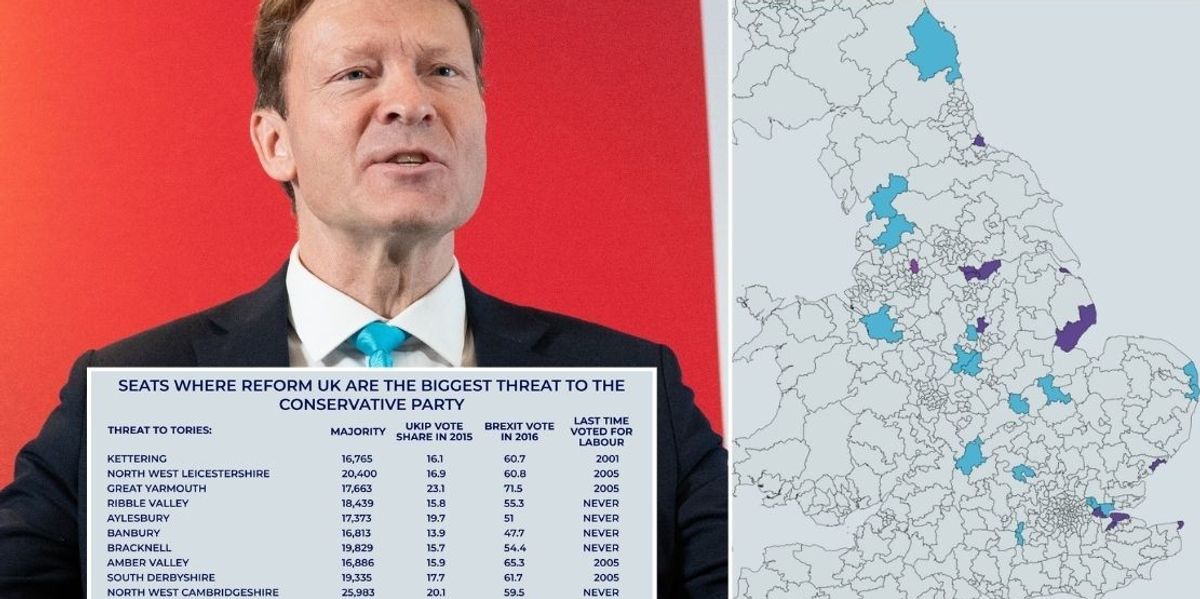
 Press Releases
Press Releases 
Reform UK have brought 19 safe Tory seats into play for Labour by hoovering up disillusioned voters, data shared with GB News has revealed.
And this broadcaster has also independently identified a further 12 seats, many of which proved fruitful for Ukip, where Reform UK will likely pump resources in if it hopes to celebrate electoral breakthroughs in Westminster.
Polling company JL Partners has named a tranche of Tory constituencies which the populist party would currently play a decisive role in switching from Conservative to Labour.
These Conservative constituencies, testament to the turbulent times facing the Tory Party, range from majorities of just 6,354 to 25,983 and do not include dozens of other seats already firmly in Labour’s sights.
However, and particularly concerning for staffers in CCHQ, the average majority in existing seats listed stands at just over 18,200.
Reform UK becomes a Conservative nightmare
JL Partners co-founder James Johnson revealed Labour and the Tories are neck-and-neck across the 19 seats, with Reform UK eating into enough of the vote to cost the Conservative candidate support.
Such a scenario would dispel the line put out by Downing Street that by-election catastrophes in Kingswood, Wellingborough, Tamworth and to a lesser extent Mid-Bedfordshire were nothing more than mid-term blues.
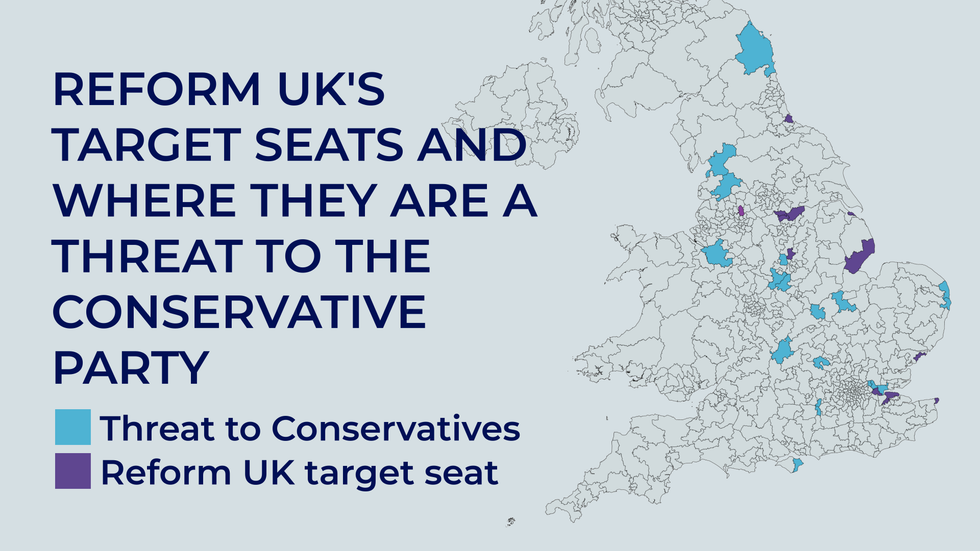
JL Partners identified 19 at risk seats and GB News separately tabled 12 Reform UK targets
GB NEWS
Kettering MP Phillip Hollobone topped the Tory casualty list as the Northamptonshire seat looks likely to fall into Labour hands for the first time since 2005.
North West Leicestershire, which is still held by Andrew Bridgen despite the 59-year-old losing the Tory whip for comparing Covid vaccines with the Holocaust, is not even safe with its 20,400-vote cushion.
Ex-Justice Secretary Sir Brandon Lewis’ decision not to seek re-election last week should also hardly come as a surprise with Great Yarmouth currently poised to break with its recent aversion to Labour.
North West Cambridgeshire and Hornchurch & Upminster should spook CCHQ by featuring on the list, with the safe seats registering majorities of 25,983 and 23,308 respectively.
Other constituencies listed by JL Partners have slightly smaller but relatively substantial majorities: Ribble Valley returned Deputy Speaker Nigel Evans by 18,439 in 2019, the Tories maintained its century-long grip on Aylesbury by 17,373 votes and Attorney General Victoria Prentis returned to the Commons with a lead of over 16,813.
But the populist party could also wreak havoc in Bracknell, Amber Valley, South Derbyshire, South Basildon & East Thurrock and Romford.
The only seat with a four-figure majority seat included on the list was Morecambe & Lunesdale.
Some new seats make the list too, with Reform UK potentially proving popular enough for Labour to claim victory in North Northumberland, Isle of Wight East, Lowestoft and Chester South & Eddisbury.
Worryingly for CCHQ, only Morecambe & Lunesdale featured on the Fabian Society’s 150-strong list of Labour target seats.
The coastal seat sat at target number 146, with a number of other seats listed by JL Partners not even falling within a 250-landslide-style target zone.
And Sunak’s biggest electoral headache might even be yet to come.
LATEST DEVELOPMENTS:
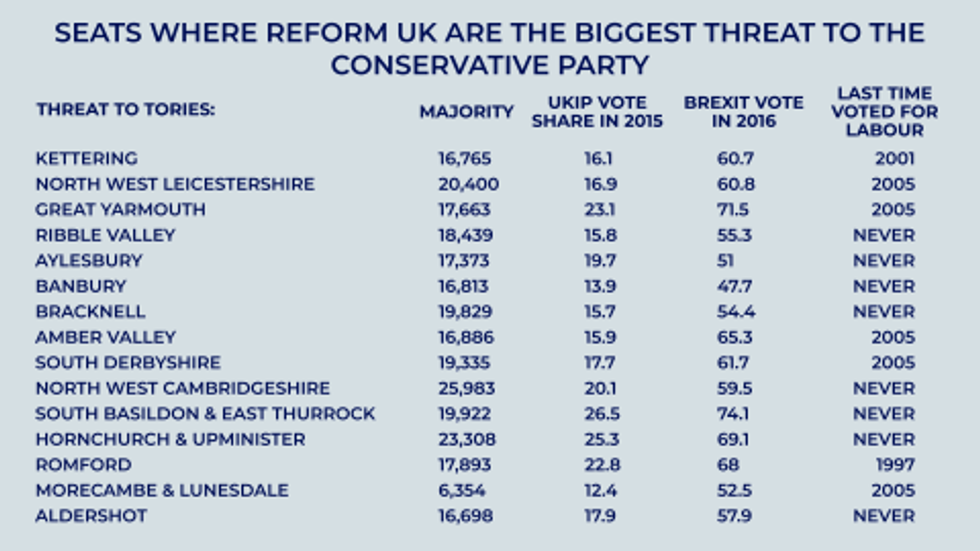
JL Partners identified a list of seats currently in play *Note recording the last time seats voted for Labour is dependent on current boundaries*
GB NEWS
There has been growing speculation about whether Farage will return to frontline politics.
But there is far less speculation about what his return could do for Reform UK.
Johnson, who led polling in Downing Street under Theresa May, added: “Farage’s calculation will basically be ‘can I overtake the Tories’ and though he can’t do this in seat terms, it is just possible that he could do this in vote share based on the current polls. Of course, a squeeze effect is likely so it could counteract that. It would be a very mean feat but it is probably the best climate he has ever faced – in terms of immigration, public discontent, frustration with both party leaders, and his post-I’m A Celeb popularity boost.”
A worried Tory source added: “If Farage goes in, it’s a totally different scenario.”
Despite the growing threat from Reform UK, GB News understands some Tory strategists are currently confident the populist party’s lack of ground campaign and resources will offset the recent poll surge.
It would appear that Reform UK is aware of its own shortfalls, with a senior source confirming capacity is limiting its ability to contest the upcoming local elections.
An insider told GB News: “We will do what we can but it certainly isn’t our focus.”
Reform UK will instead field a “glut” as the local elections remain a “secondary-interest” to the populist party.
There is also the prevailing narrative, peddled even by the Prime Minister, that a vote for Reform is a vote for Starmer.

Nigel Farage could throw his hat into the ring yet again
GETTY
No10 will hope the argument will persuade 2019 Tory voters against looking elsewhere.
A Conservative MP said: “Reform have the luxury of being able to say anything with no prospect of ever having to deliver on any of it. The harsh reality is they are a wrecking ball on the right of politics who will only achieve the very worst of outcomes – a left wing government. Split the right of centre, get Starmer and get socialism – and I really can’t believe anyone tempted to vote Reform actually wants that.”
Responding to the argument, a Reform UK source told GB News: “Their only Tory argument is you’ll let Labour in but nobody cares. The public want shot of the Tories and you cannot reward failure.”
However, the Labour Party is far from convinced that all voters siding with the populist party would opt for Sunak over Starmer.
A Labour MP told GB News: “A lot of people have made their minds up about the Tories but I don’t recognise that all Reform voters were Tory voters even if they voted Tory in 2019. Those voters are up for grabs now and it’s up to the Labour Party to convince them that we are the change they need and Reform will try to convince them that they are. But it does seem Sunak is doing everything he can to avoid an election and for good reason. They know that the verdict from voters is going to be very harsh.”
To some extent, the Labour MP is right as Ukip provided millions of Labour voters with a gateway to the Tories, often via the Brexit Party.
However, the group of voters backing Britain’s major populist parties has shifted dramatically since 2015.
Around two-in-five 2015 Ukip voters backed David Cameron in 2010, with 17 per cent supporting Gordon Brown and 22 per cent throwing their weight behind Nick Clegg.
There has been an enormous shift ahead of polling day as 82 per cent backed Boris Johnson in 2019, two per cent voted for Jeremy Corbyn and nine per cent were already supporting the Farage-Tice crusade.
However, an opinion poll by More in Common found just over a quarter of current Reform UK supporters would vote Conservative instead, a similar number would abstain from voting altogether.
The Conservative Party was so fearful about the threat from Farage in early 2015 that it set up an anti-Ukip unit to put voters off from voting for the populist party.
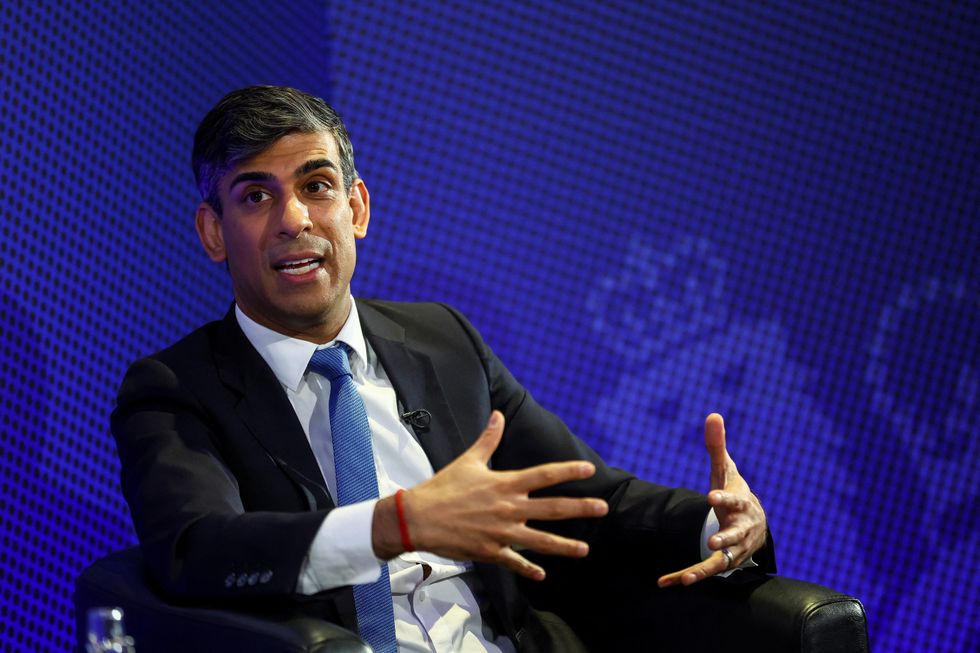
Rishi Sunak is facing a lethal threat from Reform UK
GETTY
CCHQ was unable to confirm whether an anti-Reform UK unit had been established ahead of the election later this year but insiders claimed the Tories have been monitoring the populist party’s poll surge.
However, a senior Reform UK source said: “That’s b******s, of course there is. If there isn’t then they’re asleep at the f*****g wheel.”
Sam Armstrong, who worked in the anti-Ukip unit, told GB News: “Cameron’s campaign was smart enough to appoint a team of people who came from the right, came from places where Ukip were on the rise, and who could talk to these voters in their own language. In order to squeeze Reform’s vote, the Tory Party has to sound a little bit more like the voters that it is trying to win back. The trouble is that the Tory Party has just lost the most visible representative of that kind of language [Lee Anderson].”
He concluded: “Reform UK’s destructive effect is going to be much worse than their acquisitive effect. The Conservative Party will lose dozens of additional seats to Labour for every three or four point boost Reform gets in the polls.”
Crusading through, without much of a ground campaign, Tice is now positioning himself as a lethal threat to Sunak.
A recent YouGov put the populist party just four-points behind the Conservatives, with Labour’s lead stretching to 25 per cent.
Relatively static opinion polls show Reform edging closer-and-closer to the Tories, hands Sir Keir Starmer leads above 20-points as the Conservatives tank to lows not seen since Liz Truss unveiled her omnishambles of a mini-budget.
Reform UK’s performance could ultimately prove the difference between the Conservatives maintaining some guise of an opposition party holding Starmer to account and a hegemonic decade of Labour being in power.

Reform UK leader Richard Tice delivers his keynote speech to delegates during the party sping rally at Doncaster Racecourse
GETTY
GB News has poured through the data to identify exactly which seats Reform UK stand a chance of winning at the next election.
The
Only Way is Reform in Clacton and Thurrock
Essex has long been seen as a Brexit-heartland, with all local authorities voting to leave the bloc and populist parties registering victories in EU and local elections contested across the county.
Clacton, a seaside town situated on its north east coast, was home to Ukip’s second MP following the defection of ex-Tory Douglas Carswell in 2014.
Ukip received 59.7 per cent of the vote, with a majority of 12,404.
Carswell managed to ride on a wave of support to return to Parliament as Ukip received 3.9 million votes across Great Britain in 2015.
However, his vote share tanked to 44.4 per cent and the majority was cut to just 3,437.
Estimates of the 2019 EU Parliamentary Elections also pointed out the Brexit Party’s vote share in Clacton reached as high as 57.5 per cent, making it the populist party’s second-best result behind Castle Point.
Dr Bob Spink, who was later sent down for electoral fraud charges, made a similar leap in 2008 by defecting to Ukip but lost the whip and ultimately his place in Westminster.
However, Castle Point is more out of reach for Reform UK as Rebecca Harris was returned with a 26,634-vote majority in 2019.
Speaking to GB News, Johnson reiterated his assertion that Clacton remains Farage’s best-bet if he hopes to enter the House of Commons as the 59-year-old “does better in the south”.
Armstrong, who hails from Essex, also appeared to suggest Farage could propel Reform UK to victory in nearby Thurrock.
He said: “Farage is all they’ve got in terms of their power to cut through. He is it. He is phenomenal.
“You send him anywhere and instantly it all becomes about him. The reason everyone went down to Thanet South was to keep Farage there. Farage is such a threat and so powerful a communicator that the moment he terms up somewhere else, say Great Yarmouth, all everyone is doing is talking about Farage for a couple of days.
“If Farage comes back, the Tory Party will lose seats to Reform UK. I don’t see a way, at present, that they will avoid losing the likes of Clacton or the three-way marginal of Thurrock and potentially some Red Wall seats.”
Thurrock proved an interesting result for Ukip in 2015.
Tim Aker fell short of joining 120 other Ukip candidates in runner-up spot but ended up registering the populist party’s fourth highest vote share and was a mere 974 votes from entering the House of Commons.
Disillusioned Tory voters could prove decisive in helping get Reform UK over the line or it remains possible Labour could snatch the swing seat for the first time since 2005.
It would be an enormous fall from grace for the Conservative Party, with Jackie Doyle-Price returning with an 11,482-vote majority in 2019.
However, just over 47 per cent of residents voted for the Brexit Party in the 2019 EU Parliamentary Elections, giving Reform UK some hope of riding the populist wave handed to Eurosceptics across Essex.
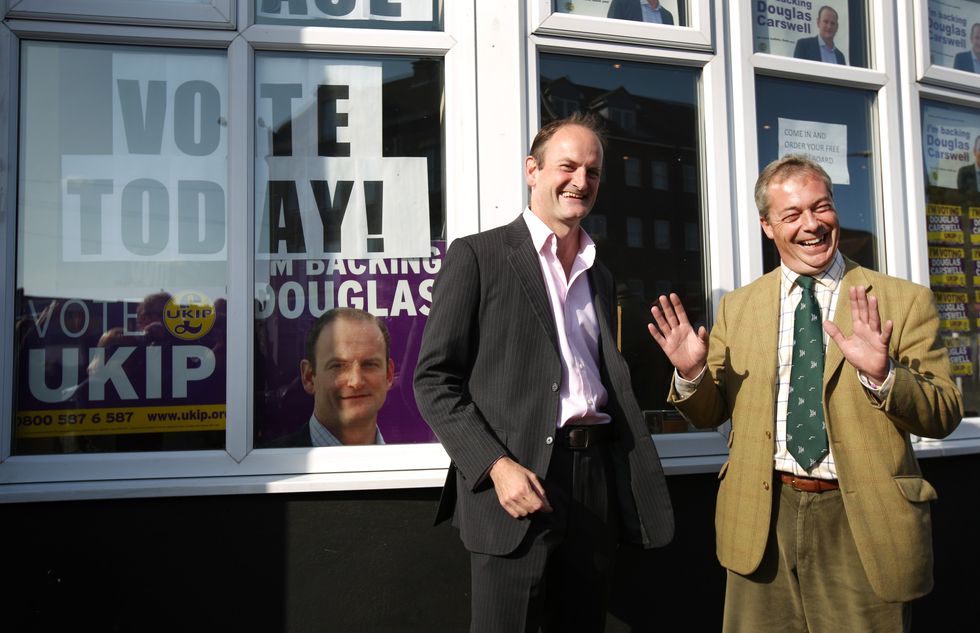
United Kingdom Independence Party (UKIP) candidate Douglas Carswell (L) stands with party leader Nigel Farage on October 9, 2014
GETTY
The
Kent Crusade – Rochester & Strood and Thanet East
Reform UK could also look to mirror Ukip Thames Estuary strategy by heading over the Dartford Crossing into Kent.
Kent, similarly to Essex, proved fertile ground for Farage but the ex-Ukip leader fell 2,812-votes short of entering Parliament as the MP for Thanet South after his friend-turned-foe Craig Mackinlay squeaked through in 2015.
Boundary changes have ensured the seat has been abolished and replaced by Thanet East.
The new constituency includes much of the old constituency and will also take on some voters from nearby Margate.
It undoubtedly isn’t quite as good a bet for Reform or indeed Farage as Clacton is but remains an area where the populist party would hope to leave its mark come polling day.
The same can be said for Rochester & Strood.
Following Carswell’s defection, Mark Reckless crossed the floor from the Tory Party to Ukip in yet another bolt from the blue.
He also managed to see off the Conservative Party’s fightback in a subsequent by-election, returning as Rochester & Strood’s MP with a majority of 2,920 after receiving 42.1 per cent of the vote.
However, Reckless’ stint as a Ukip MP was somewhat short-lived as he was defeated by Kelly Tolhurst in the subsequent general election by 7,133 votes.
Despite suffering a hammer blow in 2015, Reform UK would likely relish to emulate the 2014 victory later this year.
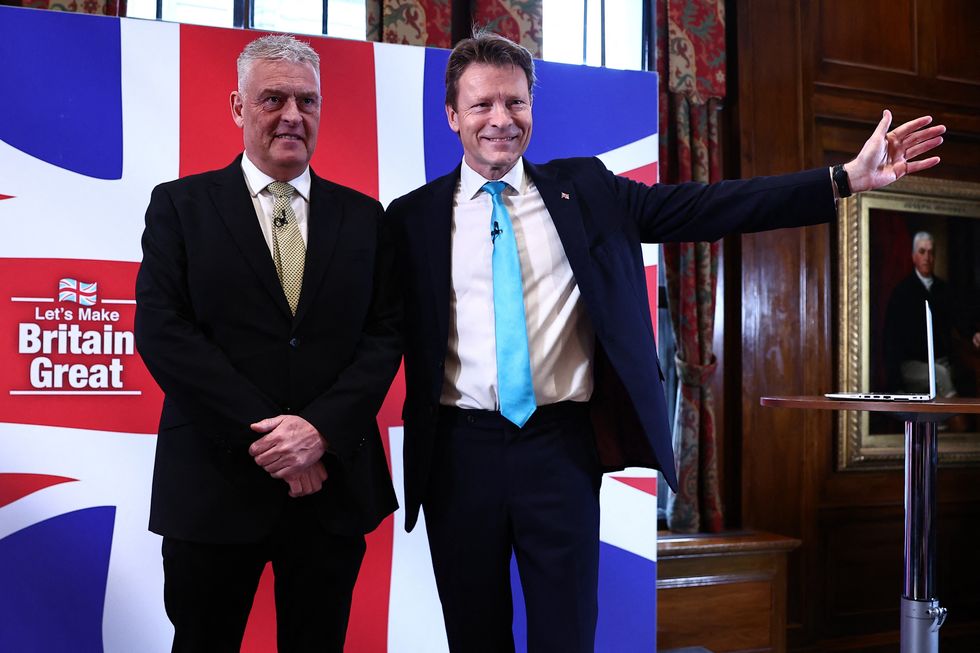
Former Conservative deputy chairman Lee Anderson (L) poses for pictures with Leader of Reform UK party Richard Tice (R) following a press conference to announce his defection
GETTY
Anderson’s
Ashfield Attack
Lee Anderson’s decision to defect from the Tories to Reform UK shocked some of the populist party’s own insiders.
“I wouldn’t have put Ashfield as one of our possible targets but with Lee there I would now,” a senior Reform UK source told GB News.
“It’s only anecdotal but I was quite taken aback by how people responded to Lee after his defection. It was overwhelmingly positive, unbelievably positive. I thought we were going to get a lot more kickback.”
Ashfield, similarly to Anderson, has a rather interesting political history.
The Nottinghamshire constituency, excluding a brief stint in Tory hands following a by-election in 1977, was always a safe Labour seat.
However, as the Tory Party pledged to get Brexit done, Boris Johnson managed to paint Ashfield and dozens of other Red Wall seats blue.
The target seat remains complicated, with Ashfield Independent candidate Jason Zadrozny winning 27.6 per cent to finish runner-up in 2019.
The former Labour Councillor defected to the Tories in 2018, joining Reform UK this month after being suspended by Sunak over comments made about London Mayor Sadiq Khan’s relationship with so-called Islamists.
Anderson doubled-down on his remarks but is adamant he is speaking up compatriots who want their country back.
Speaking about the reception received after his defection, Anderson told GB News: “My inbox tells me that people in Ashfield feel let down by the mainstream parties who have not delivered on their promises. They are seen as out of touch and Reform UK offers them an alternative.
“It feels very positive in Ashfield and this has been reflected in how many members have signed up recently. We now have more members in Ashfield than the Ashfield Conservative Association.”
Anderson’s defection will also deliver an incumbency boost.
Johnson claimed: “Anderson is helped by being an incumbent so it’s a bit of a special case.”
However, it remains to be seen whether Ashfield will be more like Clacton or Rochester & Strood.
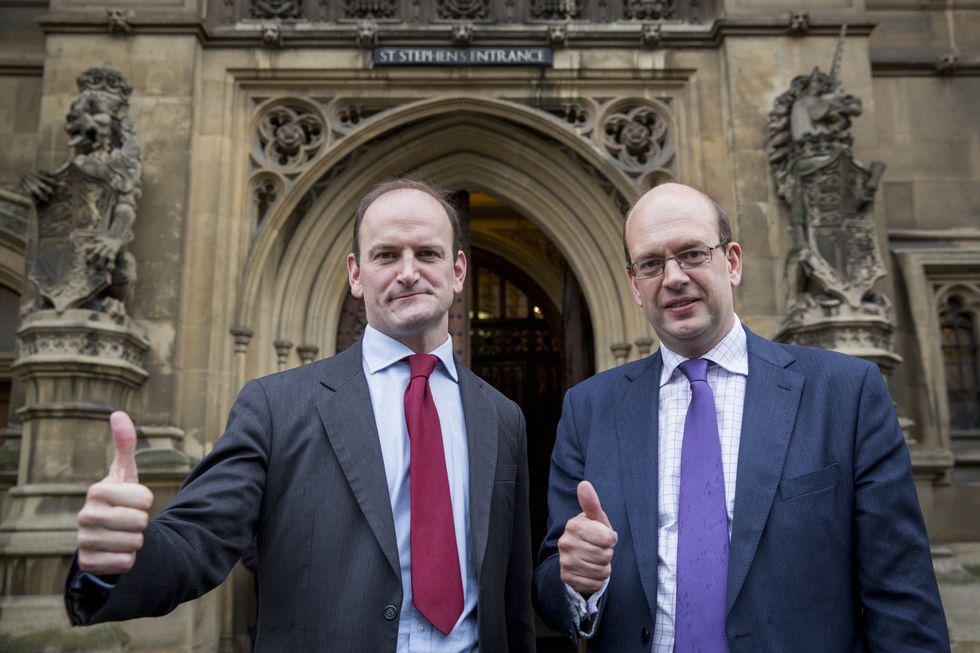
Lee Anderson’s fate could follow either Douglas Carswell and Mark Reckless
GETTY
All
Eyes on Lincolnshire – Boston & Skegness and Grimsby & Cleethorpes
Reform UK might also want to head towards the coast to return to a former Ukip heartland.
Lincolnshire proved fertile ground for the populist party and would later prove a decisive base of support in the 2016 Brexit referendum.
Boston & Skegness and Grimsby & Cleethorpes would in particular prove an interesting patch for Reform UK to target.
Matt Warman retained Boston & Skegness with a majority of 25,621 in 2019.
However, with no Brexit Party challenger, Reform UK will hope to mobilise the 14,645 voters who backed Ukip in 2015.
Ukip managed to cut Warman’s majority to just 4,336 and the Brexit Party later received support from 56.3 per cent of constituents in 2019’s EU Parliamentary Elections.
The new seat of Grimsby & Cleethorpes is slightly different.
Tory victory in Grimsby in 2019 ended Labour’s post-war grip on the town.
The Brexit-backing town witnessed a 14.7 per cent swing from Labour to the Tories to hand Lia Nici victory over Melanie Onn.
However, Ukip’s 25 per cent support in 2015 and the Brexit Party’s 49 per cent support in Britain’s last EU Elections would suggest a strong base for Reform UK to propel its campaign from.
However, despite Cleethorpes siding with the Conservative candidate in every poll since 2010, populist parties retained strong levels of support in the area.
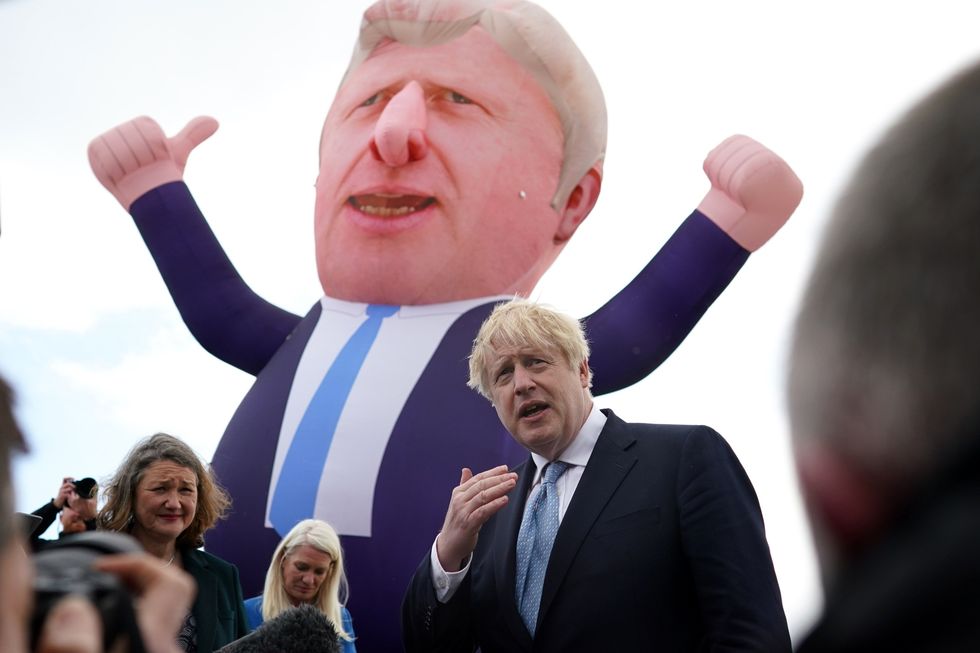
Boris Johnson visits Hartlepool
GETTY
Red Wall Crumbles – Heywood & Middleton and Hartlepool
The Tory Party is bracing for a wipeout across the so-called Red Wall.
Boris Johnson’s astonishing achievement of painting large swathes of post-industrial England blue has seemingly been undone in the blink of an eye.
For many political commentators, Farage was the gateway for Johnson’s victory as voters turned to Ukip and the Brexit Party in their droves.
A recent Redfield & Wilton poll revealed Red Wall voters have ultimately switched off from the Tories, with Conservative support tanking from 47 per cent to just 22 per cent.
Labour appears the main beneficiary as its vote share has increased from 38 per cent to 43 per cent.
However, Reform UK is managing to gather significant support, up from just seven per cent as the Brexit Party to 15 per cent today.
Reform UK’s Red Wall surge brings many seats in play, particularly Heywood & Middleton and Hartlepool.
Heywood & Middleton, won by the Tories for the first time in 2019, was seen as a major regret for Ukip.
Farage’s party fell just 617 votes short of snatching the seat in the 2014 by-election as Ukip threw its resources towards clinging onto Clacton.
Ukip received 15,627 votes just months later, 5,299 short of Labour’s tally.
Tice’s own candidacy in Hartlepool could also prove fruitful.
The former Brexit Party MEP finished third on 25.8 per cent, with the Tories marginally ahead on 28.9 per cent and Labour clutching on at 37.7 per cent.
Ukip obtained a slightly higher vote share in 2015, with 28 per cent of constituents siding with the populist party.
Despite failing to retain its deposit in the 2021 by-election, Reform could look to emulate Johnson’s victory as Jill Mortimer became Hartlepool’s first Tory MP.
Mortimer received 51.9 per cent of the vote, handing her a 6,940-vote majority over her Labour challenger.
Reform UK could look to hoover up Tory supporters disillusioned with Sunak’s Government to pose a threat to a resurgent Labour Party.
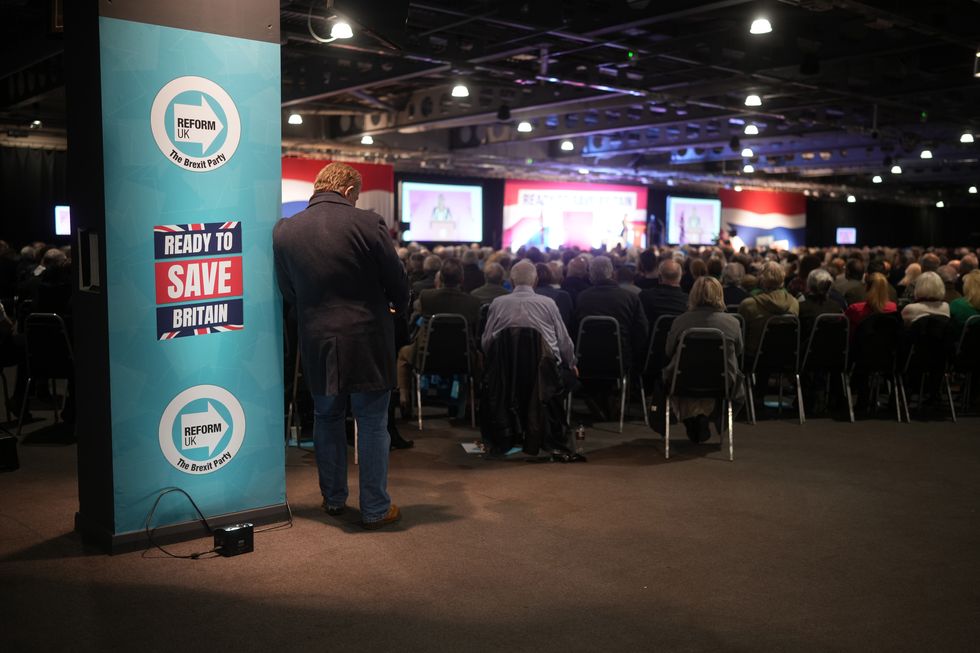
Delegates attend the Reform UK Party spring rally at Doncaster Racecourse
GETTY
Threat
to Labour – Barnsley and Doncaster North
Despite Starmer’s astronomical poll lead, three Labour seats make the list of Reform UK targets.
The trio, all situated in the wounded Red Wall, voted for Brexit and saw large levels of support for the Brexit Party in 2019.
Ed Miliband’s Doncaster North seat would appear an unlikely inclusion on the list.
Brexit Party candidate Andy Stewart was also unable to displace the Tories as the main challenger in 2019, finishing 12.5 per cent behind Katrina Sale and 18.3 per cent behind Miliband.
However, Ukip was able to obtain 22.6 per cent of the vote in its heyday, above the proportion won by the Brexit Party in 2019.
Reform UK also appears to have laid the groundwork for a Yorkshire offensive into Labour-held seats as Tice headed up to Doncaster’s racecourse for the populist party’s spring conference.
Barnsley North and Barnsley South also end up featuring on the list.
It is difficult to directly place the previous seats, Barnsley Central and Barnsley East, on the revised electoral map.
However, both Yorkshire seats handed the Brexit Party its highest levels of support in 2019, with 30.4 per cent and 29.2 per cent respectively.
The results revealed increases on the vote share given to Ukip four years earlier, up from 21.7 per cent in Barnsley Central and 23.5 per cent in Barnsley East.
However, GB News understands that the populist party is altering its electoral strategy ahead of the general election.
An insider said: “We are well-aware that first-past-the-post isn’t designed to help parties like us. I think there is a situation where we could get seven million votes and not a single seat.”
“We’ve changed our targeting strategy quite significantly. We are not targeting seats; we are targeting people. We can see from our internal mechanisms who has been working hard.”
Reform UK will instead focus on hard-working candidates who are likely to mobilise voters.
A senior Reform UK source added: “We spent a lot of time historically doing the demographics in seats up and down the country, and putting money behind the seats that look good, but if you’ve got a lazy b*****d it doesn’t matter. It is better to support hard-working candidates than always follow the data.”
24World Media does not take any responsibility of the information you see on this page. The content this page contains is from independent third-party content provider. If you have any concerns regarding the content, please free to write us here: contact@24worldmedia.com